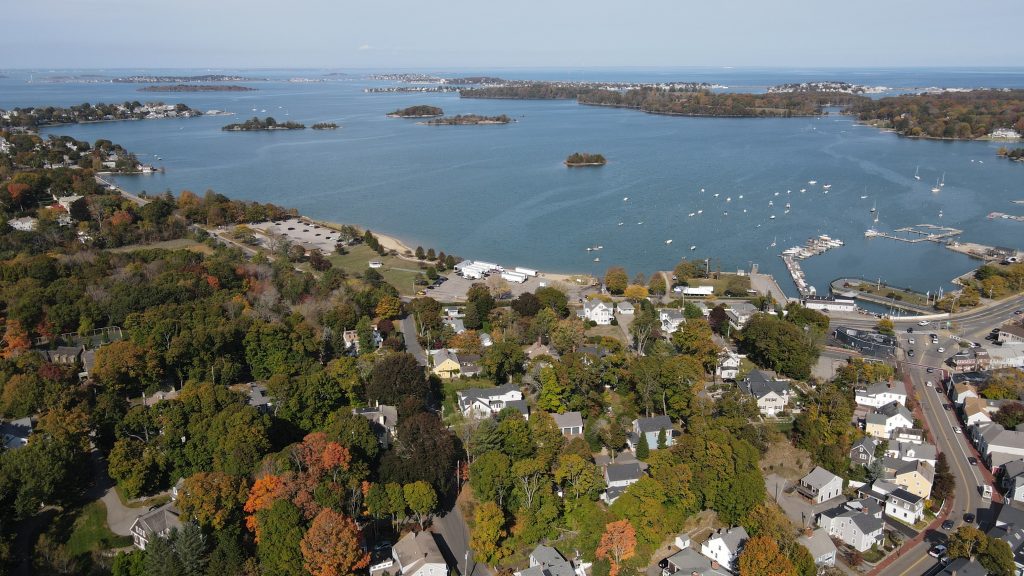
November 15, 2023 By Meteorologist Michael Page
A longer allergy season, hotter summer days, and frequent coastal flooding. Climate change will continue to alter New England’s environment over the coming decades, according to a new federal report issued this week.
The National Climate Assessment is released every few years, produced by hundreds of experts. It outlines how the climate will change as the world warms.
How the Climate has Already Changed
Between 1895 and 2011 the average temperature in the Northeast increased 2°F. Rainfall has increased by 5″.
The amount of precipitation that comes from heavy rain events–the heaviest downpours we see–has increased 60% between 1958 and 2021, a more significant increase than any other part of the United States.
The Northeast has seen a 49% increase in days with 2″ or more of rain since 1958, and a 62% increase in days with 3″ or more of rain.
The numbers are even more dramatic when you look at days with more than 4″ of rain (an 84% increase) and more than 5″ of rain (103% increase).
These are the events that produce widespread flash flooding.
Drought has also decreased in the Northeast between 1901 and 2015, though not as much as researchers expected based on the increase in heavy rain.
Since 1900, sea level has risen about a foot here. That’s 8″ higher than the global average. The enhanced rise locally is thanks in part to land subsidence–essentially New England is sinking–and from weakness in the Gulf Stream, the major ocean current that swirls off the New England coast.
What Happens Next
The path forward largely depends on greenhouse gas emissions. If emissions of those heat trapping gasses continue to increase, temperatures will rise a staggering 4.5-10°F by the 2080s, according to an earlier version of the report.
Even if emissions are reduced, temperatures will rise another 3-6°F by the 2080s.
That would result in another 20-40 days at or above 90° during the summer-time in Southern New England.
Keep in mind that the South Shore typically sees about a dozen days at or above 90°F right now.
Temperatures at night will also become warmer, which is particularly troublesome for health. Those without air conditioning often suffer when it’s hot both during the day, and at night, giving the body no chance to recover.
In the last two decades we’ve seen an average of 2.1 additional nights staying over 70°F.
It’s also likely New England will see fewer cold air outbreaks during the winter. In the last two decades the Northeast is seeing an average of 6.7 fewer days with temperatures below 32°F
If cold days continue to become less common, heating costs would likely go down.
Fewer very cold days will also lengthen allergy season. In fact, the ragweed season in Northern New England has already increased by 2-4 weeks.
Temperature changes will also result in a 43-49% increase in habitats suitable for mosquitoes that transmit West Nile Virus, according to the National Climate Assessment.
In general, experts predict heavy precipitation events will continue to become more common.
At the coast, sea levels are expected to rise at least another 1-4 feet by the end of the century, experts say. That will make coastal flooding three times more likely in New England over the coming decades.
In Boston alone, coastal flood damage to buildings and contents may reach a cumulative $94 billion, one projection shows, between 2000 and 2100.
On land, the birds that fly in New England’s sky will continue to change as species adapt to a new environment.
Similar changes will continue in New England waters, as well, with lobster populations south of Cape Cod dropping. Meanwhile, species now native to the Mid-Atlantic will become more common here.
This report is just the latest to outline how many changes in the coming decades are ‘baked in’, meaning we will see them regardless of what we do next. Our actions from here on out will determine how significant the changes are.



